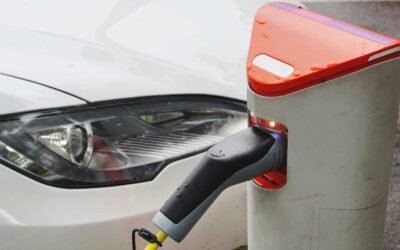Evolution of V2G: CPOs-Automotive OEMs-Utilities at the center of transition
About the Whitepaper
V2G technology, despite being in its early stage, is expected to alter not only the electric vehicle (EV) market, but the entire electricity market as well. So far, one of the biggest hurdles to V2G adoption has been a lack of V2G standard. However, with CharIN promising a new standard in 2025 and Automotive OEMs joining NACS (North America Charging Standard) in the USA, the landscape of V2G is going to drastically change very soon.
In this whitepaper, we take a deeper look at the possible use-cases leading to new revenue streams from V2G, key stakeholders (Automotive OEMs, Utilities, CPOs) trying to get a share of that revenue, and several simulated scenarios where one of them potentially leads the V2G space and can capture majority of this opportunity. The sections of the whitepaper include:
Overview of V2G Technology Today
- Growth of DC EV Chargers Globally
- Emergence of V2G as a Technology
- Regulations Enabling V2G Integration
Use-Cases of V2G and Their Importance
- Renewable Curtailment Reduction
- Capacity Firming
- Frequency Regulation
- Congestion Management
Key Stakeholders in the V2G Space
- CPOs/MSPs
- Utilities
- Automotive OEMs
Simulation Scenarios – Looking Ahead
- CPOs manage V2G as the sole aggregator
- Automotive OEMs control user’s V2G experience as an aggregator
- Utilities acting as a sole aggregator controling the V2G evolution
Related Articles
EV Uptake in Eastern Europe Lagging Behind the Rest of the Continent
• While it is true that many targets and policies supporting the transition away from ICEs are coming out of Europe, the rate of electrification is certainly not homogenous across Europe, with Eastern Europe lagging behind.• An opportunity to accelerate EV adoption in...
Asia Pacific Betting on Fuel Cell Electric Vehicles to Tackle Climate Concerns
• Fuel cell electric vehicles are much more efficient than internal combustion engine vehicles and are powered by hydrogen or methanol in some cases.• Japan has the world’s largest hydrogen refueling network, accounting for more than 154 refueling stations as of last...
Latin America’s Push for eMobility: Policies Accelerating the Market
Still in the early stages of adopting the technology, Latin American countries are progressively increasing the number of privately owned electric cars (EVs) on the roads. With incentives and an expanding network of charging infrastructure, the region hopes to...
Related Articles
Electric Vehicle Charging Infrastructure in ASEAN: Need of the Hour and Challenges in Way
There is an immense untapped potential in EV market especially in countries within the Association of Southeast Asian Nations (ASEAN), where there has been positive momentum regarding the EV production and its charging infrastructure. Malaysia plans to build 25,000...
EMEA EV Charger Market Outlook in 2020 and the Factors Driving it Further
Even though 2020 was a challenging year for most of industry sectors but EVSE (Electric Vehicle Supply Equipment) market in EMEA particularly in some of major European countries grew at a rapid pace owing to the major investments and subsidies from the government as...
Plans and Incentives Driving the Major E-Mobility Markets
Global CO2 emissions dropped 5.8% in 2020 but are expected to increase again in 2021 according to IEA. Consumers worldwide are still reluctant to forsake ICEs for EVs owing to lack of charging infrastructure. Many countries, like Germany, France and the UK have shared...
European Climate Law to be the Lifeline out of Pandemic
The pandemic shrunk the EU’s economy by 6.1% in 2020. The European Climate Law proposes a 55% reduction in net greenhouse gas emissions by 2030, compared to 1990. A European scientific advisory board on climate change is established under the European Climate Law. In...







